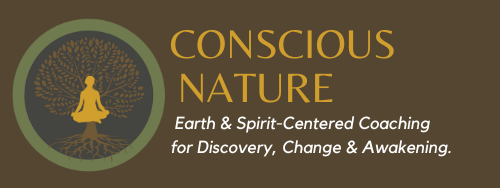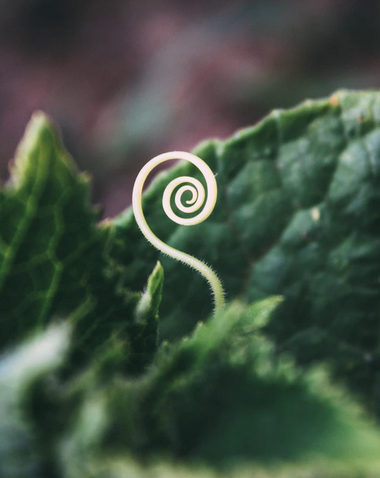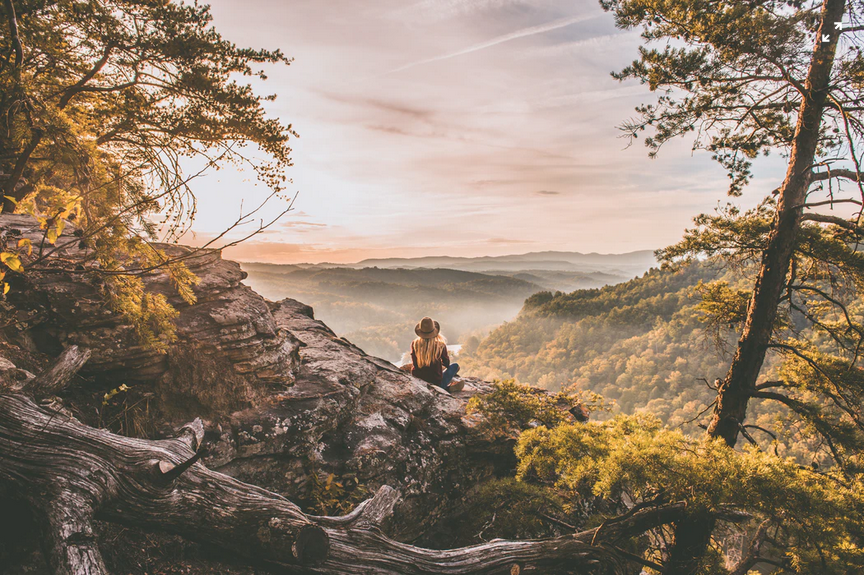
How to Get Started with Forest Bathing (Shinrin-Yoku)
“Forest Bathing” (Shinrin-yoku, or immersing in the atmosphere of Nature) is a powerful way to mindfully nourish your immune system. Simply by making time to connect and explore with your senses, you’ll get in tune with the world of Nature. Ditch stress and refresh your mind, body, and heart with this simple and healing practice.
Check out the poster and article below for tips on how to jumpstart your own outdoor mindfulness practice.
Connect to the Nature within & around you with this 4-Part Meditation Cycle from my bestselling meditation book, Conscious Nature: The Art and Neuroscience of Meditating In Nature.
Finding a Great Outdoor Meditation Spot
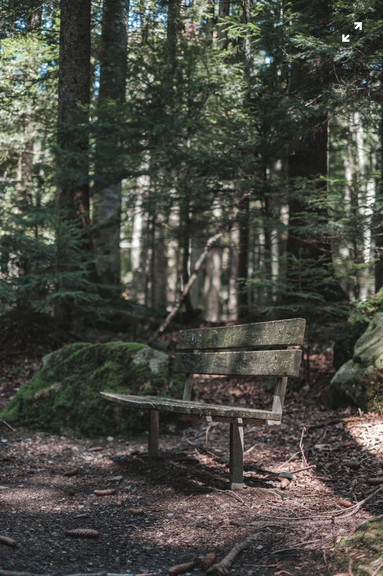
If you’re just getting started and you want help picking a great spot to sit and mindfully enjoy the outdoors, read my article The Meditation Spot: Finding a Sacred Place to Connect In Nature.
It’s possible to enjoy many of the benefits of meditating in Nature in a wide variety of environments, including the urban landscape.
For urbanites, find a local city park that you can get to periodically. Pick a spot where you can lean against a tree, overlook a pond, or enjoy a view from a park bench.
I’ve even had clients establish their daily Meditation Spots in the office park at work, visiting during lunch to savor a few mindful moments.
It’s amazing what kinds of animal encounters you can have when you slow down and expand your senses – red foxes, red-tailed hawks, and even peregrine falcons may be hidden in plain sight! If there’s squirrels, then there’s also probably something around that’s trying to eat them….
Outdoor Mindfulness Helps You Discover the Gifts Nature Has to Share With You
Wherever you are, asking “What aspects of Nature can I find and connect with today?” can open your awareness to unnoticed possibilities. Once you’ve found your Meditation Spot, I invite you to try this four-part Meditation Cycle from my book, Conscious Nature.
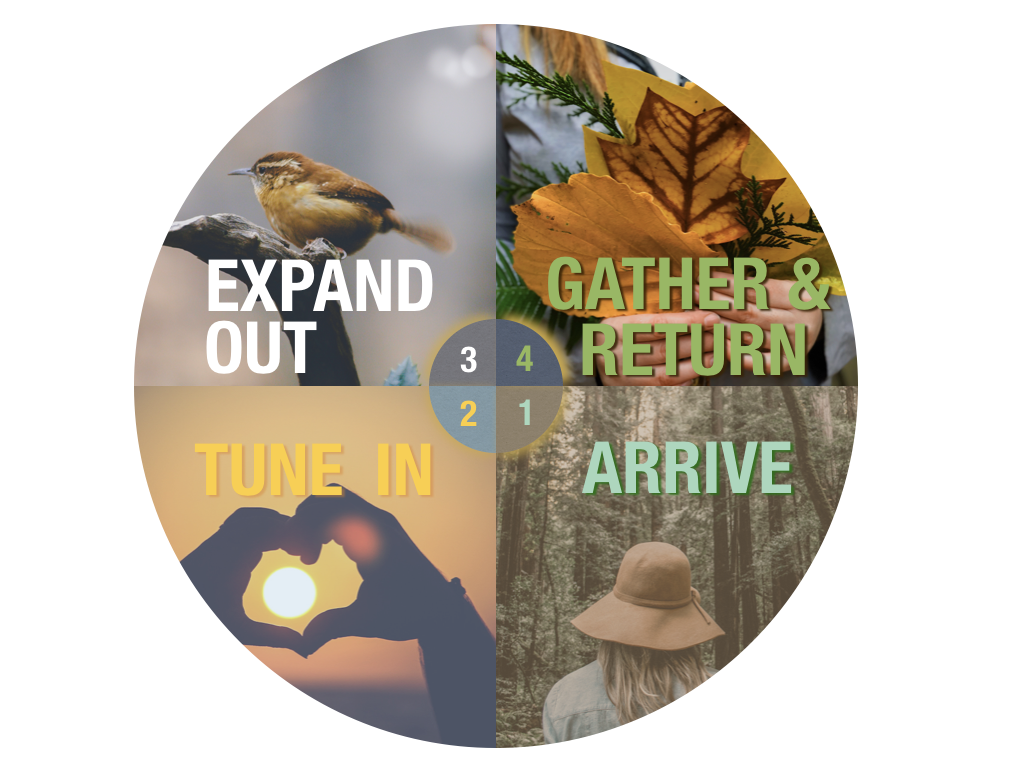
Of course, you don’t need to use each phase listed here to enjoy mindful moments in Nature. However, this cycle is helpful because it encompasses each part of your meditation, from your initial intention setting and journey of getting to your Meditation Spot, through your sitting practice and then the return back.
By placing importance on each of these phases, we are creating a holistic container for supporting deeper layers of mindfulness and connection each step of the way.
So, I invite you to check this process out, and consider how you can apply this to your own outdoor meditations.
I’ve outlined the four parts on the poster above for easy reference, and below you’ll find more foundational insights into each phase, too.
The book details each phase with a variety of mindfulness practices and awareness techniques, so that you can awaken connection with Nature on many deep levels. Here, I’ll endeavor to give you a good enough footing to get started with the four phases of an effective Nature Meditation practice:
Mindful Practice, Part 1 – Arriving Into Nature
Getting Into Your Mindful Awareness Mode
By slowing down your movement as you walk to your Meditation Spot, you’ll already begin to shift out of the usual daily mindset and into “awareness mode.”
Pay attention to each footstep. Stop often. Pause to smell the scents in the air, and listen around you to the birds and the breeze. By taking time to slow down and arrive into your senses, you’ll already be more present and relaxed when you actually sit down to meditate.
The Power of Setting Your Intention
Before you even head out the door to visit your Meditation Spot, I invite you to consider your intention. Why are you going, and what is your purpose today?
Do you want to simply relax and ground yourself? Find some creative inspiration? Learn about the animals, plants, or something else on the landscape?
Cultivating a clear intention helps your mind and senses to focus, allowing you to be more present. Awareness of your intention is therefore a crucial aspect of Arriving into Nature.
Outdoor Mindful Practice, Part 2 – Tuning In
Why “Vibe” Matters in Connecting With Nature
Have you ever noticed that some people tend to attract animals to them? Birds, squirrels, deer and even more elusive animals seem to be curious or even comfortable in their presence. Why is it that?
Part of this effect has to do with a person’s “vibe.” We each project information about ourselves in the way we carry our bodies — in our posture, movement, tone of voice, and other indicators. Animals are experts at reading body language. They tend to be startled by fast motion or unexpected loud noises.
A simple way to reduce the “splash” we make and see more animals is… you guessed it, slow down and be quieter! Not rocket science.
But to do this, we need to realize that what we’re carrying with us can effect our mindset and movement. If we’re carrying a huge amount of stress or worry, or just have a strong habit of getting lost in thought, it can be difficult sometimes to get out of the mind’s whirlpools and into the present. Then, it’s easy to lapse away from our mindfulness practice.
Thankfully, we have some great mindfulness mentors all around us at our Meditation Spots – the birds!
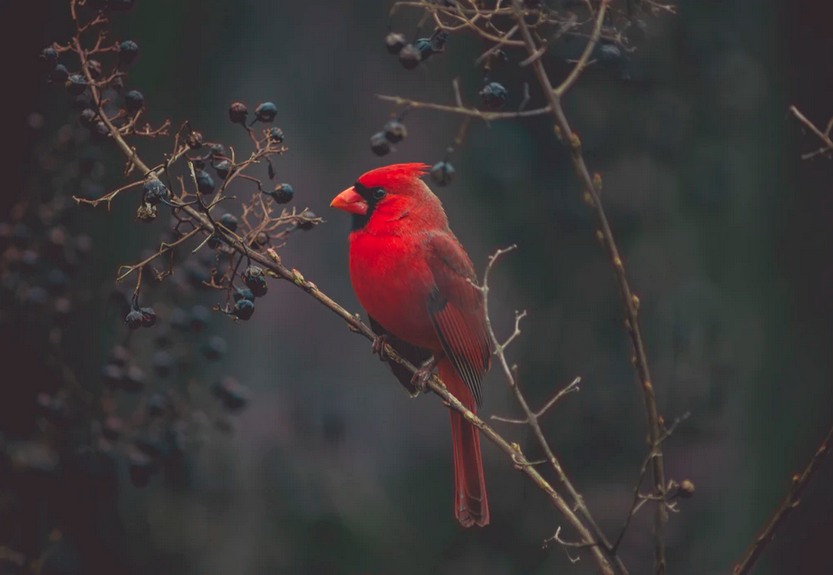
When you get lost in thought, it’s all too easy to miss the birds and other animals around you. Then, your movement may scare them away from whatever they were doing, be it feeding or singing or whatever else.
Once a bird or squirrel is pushed from its “happy place,” it’s going to likely make an alarm and call you out! Then, the other animals become alerted that someone (ahem) is causing a disturbance. Good luck at that point seeing any wildlife 🙂
A Quick Awareness Lesson in Nature’s Biofeedback
Here’s an example I recorded so that you can hear what a very agitated American robin sounds like. This particular “teek tut tut tut!” and “teek, teek, teek!” alarm sequence is often used in the springtime when a red-tailed hawk or other predator is nearby the nest, causing danger to the fledglings. You can easily hear the tension in the bird’s voice.
What I invite you to pay attention to here is the feeling of the alarm. Notice if birds respond to you or others with a feeling of tension like this in their tone and rhythm (usually when it’s a person intruding on a bird’s space, the bird will make a quick sharp alarm and then fly off).
If tension is present in their response, it’s a great cue to slow down, expand your senses, and set the intention to relax further into Nature’s rhythm.
Zen teachers of certain lineages have traditionally been known to rap a dozing meditator on the shoulders with a flexible “encouragement stick” to help bring them back into the moment; similarly, the robin’s alarm is Nature’s way of reminding you to inhabit the present tense.
Actually, if you sit still for about 20 minutes, things will start to settle back down. During this time, check in with yourself.
Is there anything from your day that you can let go of for now, so that you can return to your senses and enjoy the moment?
I cover a lot more about this important phase of meditation in my book, because how we approach our meditations and check in with what’s happening in our Inner Nature has such an impact on what and how we experience the natural world around us, too.
So, do a “vibe check” and notice what you’re broadcasting when you sit. By the time you get back up, you’ll likely notice a nice shift in how you feel inside (especially if you were carrying a lot of stress on the way to your Spot).
Outdoor Meditation Cycle Part 3 – Expanding Your Senses Outwards into Nature’s Language
Once you’ve Arrived and Tuned In at your Meditation Spot, it’s a great time to Expand Out.
You’ve moved slowly and quietly to your spot, causing as little disturbance to the wildlife as possible. You’ve taken at least a few minutes to relax a bit and check in with yourself, and you’ve begun to let go of the day’s concerns. Now, you are primed to immerse in Nature’s rhythms and energy even further.
Sensory Expansion and Alpha Brain Waves
There’s many practices you can do for this phase of your outdoor meditation. In the book (chapter 4, “The Nature of Action and Stillness”), I map out the neural and biochemical changes that happen during these phases.
One important change that occurs while you immerse in Nature is a shift towards alpha brain waves. These relaxed waves cycle 8-13 times per second through particular regions in the brain, acting like “windshields wipers” for the attention circuits. Alpha waves clear away accumulated stress and tension, restoring your capacity to focus.
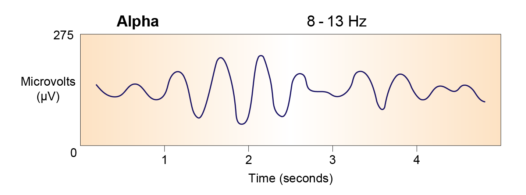
clearing stress and relaxing the body.
The Art of Reveling in Nature to Restore the Brain’s Attention Pathways
One helpful technique to restore attention is simply to let your senses go where they will, enraptured by the soothing patterns of Nature. I call this practice “Reveling,” and it removes the burden of having to focus the mind on anything in particular.
When thoughts arise (and that’s generally not if, but when they arise), simply notice and gently return your awareness to your senses and surroundings.
As you see the ground and sky… hear the soundscape… smell and taste the air… and feel your body in relation to the world, simply allow Nature to invite you into a sense of mystery, wonder and awe.
Revel in the flow of life coursing through the land. Feel your part in that flow of life, and allow it to fill you up.
That’s reveling. Try it out at least a few times, and discover for yourself how simple it can be to immerse in Nature’s flow.
Reading Nature’s Language
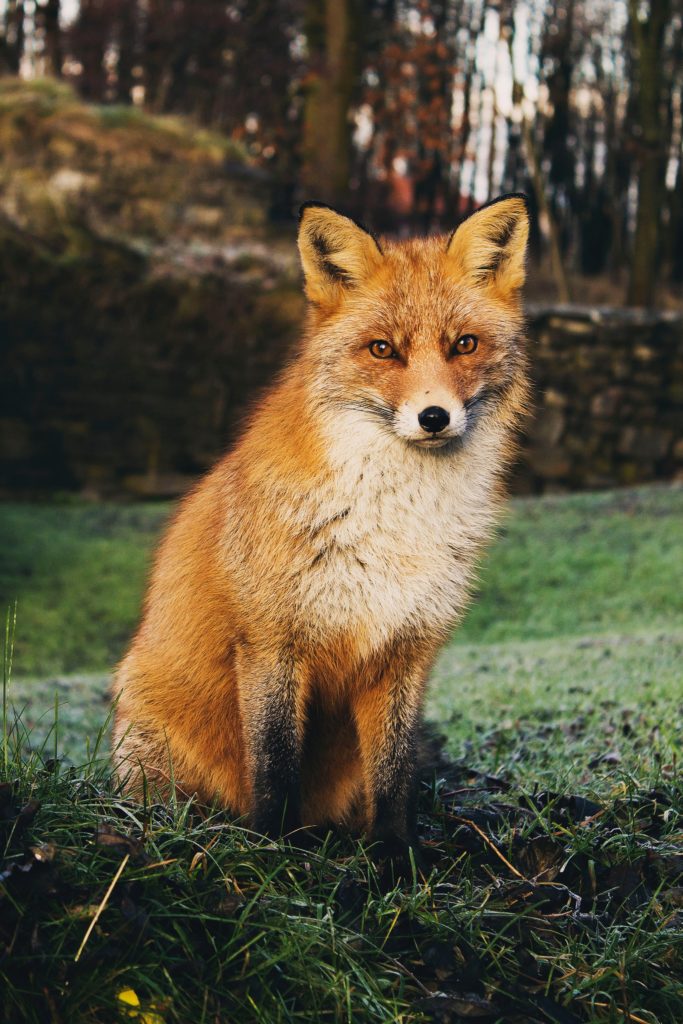
As you revel in Nature’s patterns or enjoy other sensory practices, this phase of the meditation expands your awareness out to your surroundings.
You may become aware of the songs, calls, and alarms of the birds and animals, as you sense the feeling flowing through the area.
After all, you are not the only one creating an impact through your presence… the animals are going about their lives, and the conversation amongst the forest citizens always has interesting information to yield to inquiring ears.
By sitting in the same place often, you’ll begin to get a sense of who’s around, and who’s talking about it. You’ll begin to connect the dots, and realize that there is a language in Nature that you can tune into, and that you’re part of the story, too!
When that happens, you start to bring together the Inner and Outer aspects of Nature, and discover the inter-relatedness moving through it all. That’s some true Nature Jedi stuff!
Outdoor Meditation Cycle Part 4, Gathering & Returning
Once you’ve sat for a bit and immersed in the landscape’s sensory invitations, it becomes time to head back home, or wherever you’re off to.
Don’t quite rush off, though. I encourage you to take a few moments to once more marshal your sense of intention, and celebrate all that you’ve connected with during your meditation.
This is a perfect moment for integration and further embodiment, and that’s the purpose of this phase of the meditation cycle.
This grounding will be a gift to all those you interact with, who may appreciate (even unconsciously) the extra bit of peace that you carry forward as a gift from Nature.
Deepen Your Journey Into Nature
The book goes in-depth through how to immerse in these four crucial arts of awareness (Arrival, Tuning In, Expansion, and Gathering). If you’d like a deep dive into each of these topics, I invite you to go further with the practices offered there.
Readers are guided in:
- How to explore a full set of mindful sensory practices,
- Journaling and observation techniques,
- Qi Gong skills for centering, meditations for learning to read Nature’s language,
- And much more… including transformative nature mentoring skills, and a framework of neuroscience that reveals what’s happening in the brain while all this is going on.
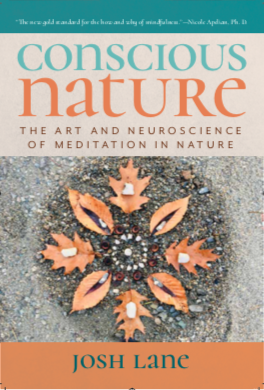
Experience mindful meditations for connecting more deeply with the Nature within and around you
Expand your senses as you relax into Nature’s patterns
Feel more at home in the outdoors, and more grounded in your body wherever you go
Learn how to harness the Five Key Brainstates of Awareness for well-being and creativity
Learn More @ https://www.consciousnature.net/get-the-book
